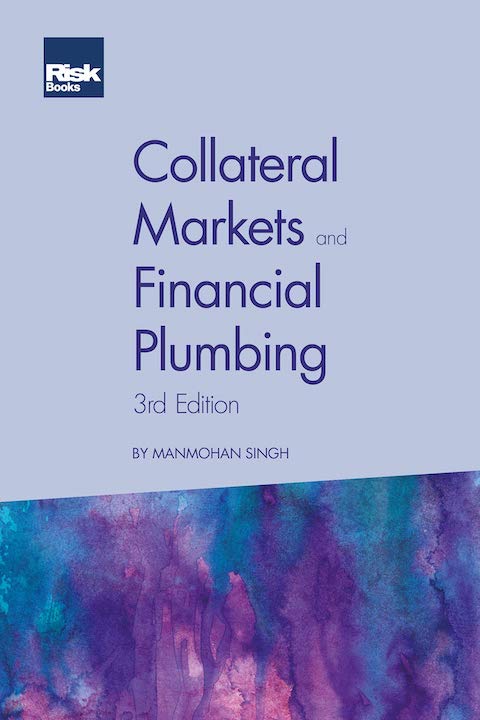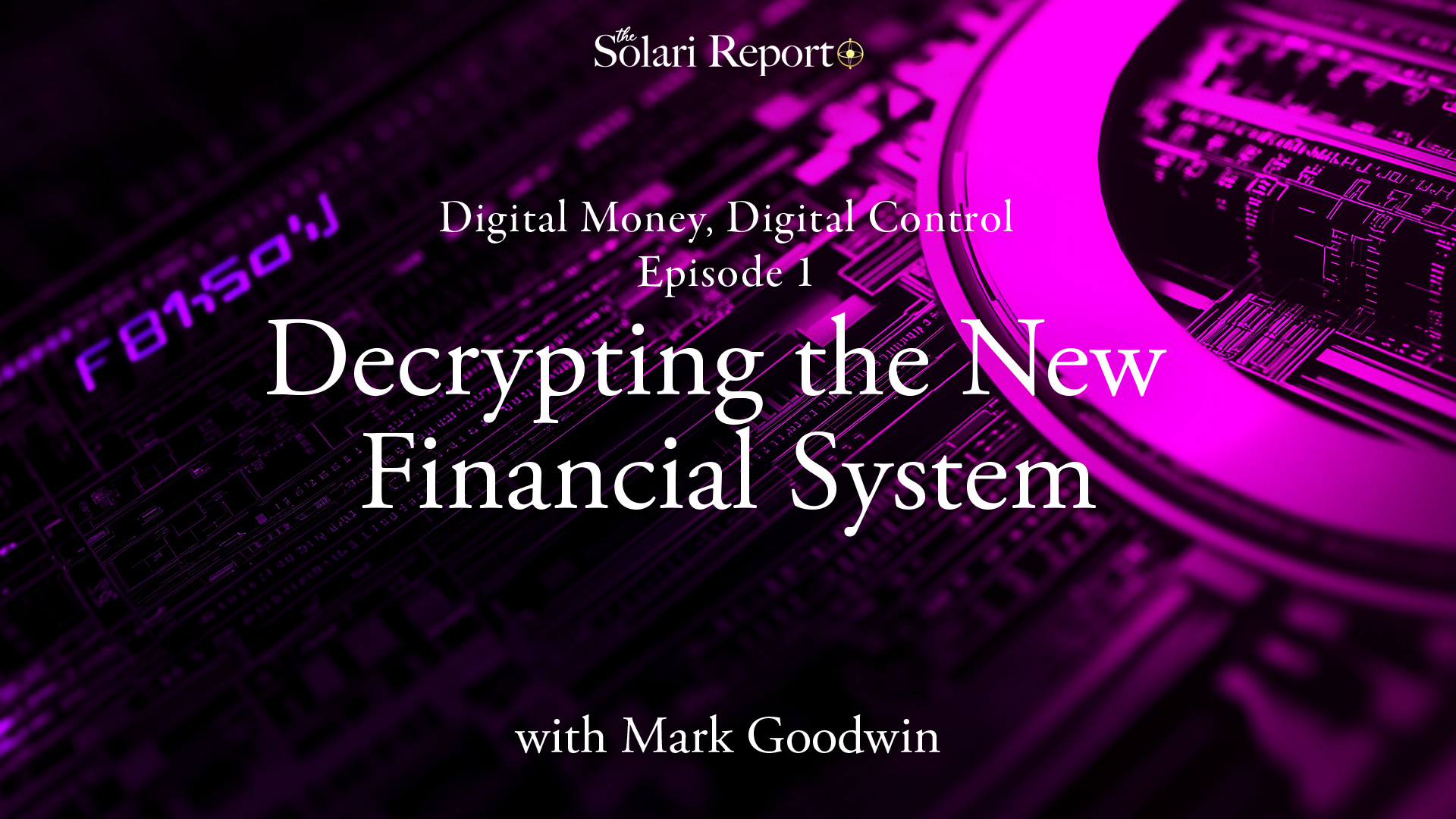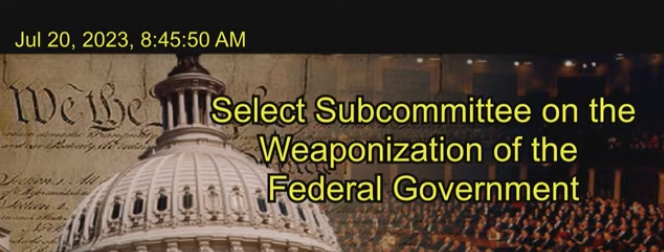
“The term collateral refers to an asset that a lender accepts as security for a loan.”
~ Julia Kagan, Investopedia
By Catherine Austin Fitts
This is a book on the global collateral system by a senior economist at the International Monetary Fund (IMF) in Washington, Manmohan Singh. This is a serious review by a technician—so I would not attempt it unless you have a financial background and are sufficiently interested to plow through the charts, graphs, and statistics involved.
The author’s main thesis is that liquidity in the global financial system is constrained by a shortage of quality collateral and an inability to rehypothecate collateral sufficiently. Indeed, rehypothecation has fallen by approximately a third—from 3x + before the Global Financial Crisis to 2x +.
This is a phenomenally complex, obtuse way of saying:
- There are far more fixed-income securities and loans outstanding than there are productive assets and populations to support them.
- Many of the financial institutions that are trading and holding these securities and loans or title to the related real assets do not trust each other, often for good reason.
- There is a great deal of fraudulent or overvalued collateral in the global collateral system.
This situation is obvious to anyone who has ever looked into the details of mortgage fraud or stories like Wells Fargo faking customer accounts. What is new is writing a long, complex book trying to describe and solve the problem without talking turkey about the actual problem—this is a statistical version of what I call “pretzel talk.” In my experience, most pretzel talk comes from Washington and the people paid by Washington to spin and expertize for them.
The fundamental problem in the global collateral system is fraudulent collateral and fraudulent practices, often created by or with the help of parties that have sovereign immunities, making it difficult if not impossible to enforce contracts, stop fraudulent behavior, and prosecute perpetrators. This apparently is not something to be addressed by IMF economists—their employer being a significant contributor to the problem.
On each of the Solari Report’s quarterly Wrap Ups, Dr. Joseph Farrell speculates on whether the push to land on asteroids is to use them to shore up the global collateral system. I am sure it will come up this weekend when Dr. Farrell and I record Part I of News Trends & Stories for our 3rd Quarter 2022 Wrap Up. Whatever challenges we may have in communicating what is happening in the global space program, it is not anywhere near as difficult as trying to explain what is taking place in the global collateral system within the official narrative.
Given what is going on in the Going Direct Reset and in the global derivatives, fixed income, and currency markets, the pressure in the global collateral system is growing more explosive every day. Mr. Singh thus has a very difficult job. However, successfully navigating the road ahead will require real intelligence rather than an official narrative bubbled with pretzel talk.
The situation reminds me of that great line from A Course in Miracles:
“Nothing real can be lost. Nothing unreal is real.”
Buy the Book:
Collateral Markets and Financial Plumbing by Manmohan Singh
From the Solari Site:
Book Review: Bailout by Neil Barofsky
Related Reading:









Thanks.simple stated..Ill borrow to explain to my nonfinancially minded friends..Jan
Here’s a quick lesson for Mr. Singh lest he want the straight talk rather than the pretzel theoretical talk your review speaks of Catherine. This priceless piece of prose was given to me by a colleague in the insurance business who was a bit older than I and who on many occasions gave me, the bit younger upstart, sane advise in the crazy business of risk management, finance & collateral.
“Subject: Understanding Derivatives
Understanding Derivatives
Heidi is the proprietor of a bar in Detroit. She realizes that virtually
all of her customers are unemployed alcoholics and, as such, can no longer
afford to patronize her bar. To solve this problem, she comes up with a new
marketing plan that allows her customers to drink now, but pay later.
Heidi keeps track of the drinks consumed on a ledger (thereby granting the
customers’ loans). Word gets around about Heidi’s “drink now, pay later”
marketing strategy and, as a result, increasing numbers of customers flood
into Heidi’s bar. Soon she has the largest sales volume for any bar in
Detroit .
By providing her customers freedom from immediate payment demands, Heidi
gets no resistance when, at regular intervals, she substantially increases
her prices for wine and beer, the most consumed beverages. Consequently,
Heidi’s gross sales volume increases massively.
A young and dynamic vice-president at the local bank recognizes that these
customer debts constitute valuable future assets and increases Heidi’s
borrowing limit. He sees no reason for any undue concern, since he has the
debts of the unemployed alcoholics as COLLATERAL.
At the bank’s corporate headquarters, expert traders figure a way to make
huge commissions, and transform these customer loans into DRINKBONDS. These
securities then are bundled and traded on international securities markets.
Naive investors don’t really understand that the securities being sold to
them as AAA secured bonds really are debts of unemployed alcoholics.
Nevertheless, the bond prices continuously climb, and the securities soon
become the hottest-selling items for some of the nation’s leading brokerage
houses.
One day, even though the bond prices still are climbing, a risk manager at
the original local bank decides that the time has come to demand payment on
the debts incurred by the drinkers at Heidi’s bar. He so informs Heidi.
Heidi then demands payment from her alcoholic patrons, but being unemployed
alcoholics they cannot pay back their drinking debts. Since Heidi cannot
fulfill her loan obligations she is forced into bankruptcy. The bar closes
and Heidi’s 11 employees lose their jobs.
Overnight, DRINKBOND prices drop by 90%. The collapsed bond asset value
destroys the bank’s liquidity and prevents it from issuing new loans, thus
freezing credit and economic activity in the community. The suppliers of
Heidi’s bar had granted her generous payment extensions and had invested
their firms’ pension funds in the BOND securities. They find they are now
faced with having to write off her bad debt and with losing over 90% of the
presumed value of the bonds. Her wine supplier also claims bankruptcy,
closing the doors on a family business that had endured for three
generations, her beer supplier is taken over by a competitor, who
immediately closes the local plant and lays off 150 workers.
Fortunately though, the bank, the brokerage houses and their respective
executives are saved and bailed out by a multi billion dollar no-strings
attached cash infusion from their cronies in government. The funds required
for this bailout are obtained by new taxes levied on employed, middle-class,non-drinkers who have never been in Heidi’s bar.
Now do you understand?”
~PRICELESS!